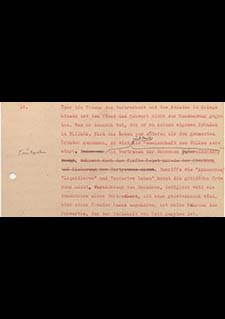On the Exegesis of the Fifth Commandment
In keeping with theological tradition, the synod granted that the state may kill an enemy in war and kill a criminal to protect society as an instrument of official force. Nevertheless, it stressed that the divine order did not recognize concepts such as “eradication”, “liquidation” and “unworthy life”. On the contrary, it utterly could not and did not want to reconcile the “eradication” of “unworthy” life with the principles of the divine order.
This was a reference to the petitions of Pastor Paul Braune, director of the Hoffnungstal Institutions, or Bishop Theophil Wurm, which were directed against the so-called “euthanasia” program in 1940. Nazi propaganda had selected the euphemism “euthanasia” quite deliberately in order to conceal the “program’s” purpose: the systematic murder of people with mental and physical disabilities. Both Braune and Wurm had lodged vigorously protests with the relevant government agencies against the killing of people with mental and physical disabilities.
This excerpt from the text provides insight into the development of Point 14 of the statement. The adopted version in which the handwritten revisions were incorporated reads:
The state has not been given the sword to wield beyond killing a criminal and an enemy in war. Whatever it does nevertheless, it does despotically to its own detriment. If life is taken for another reason than those cited, then people’s trust in one another is undermined and the national community is thus destroyed. The divine order does not recognize concepts such as “eradication”, “liquidation” and “unworthy life”. Destroying people, merely because they are a criminal’s relatives, old or mentally ill or members of another race, is not wielding the sword in any manner that has been given to the authorities by God. (Hermle, Thierfelder, Herausgefordert, 666)
Source / title
- © Evangelisches Zentralarchiv in Berlin, Best. 50 Nr. 616

